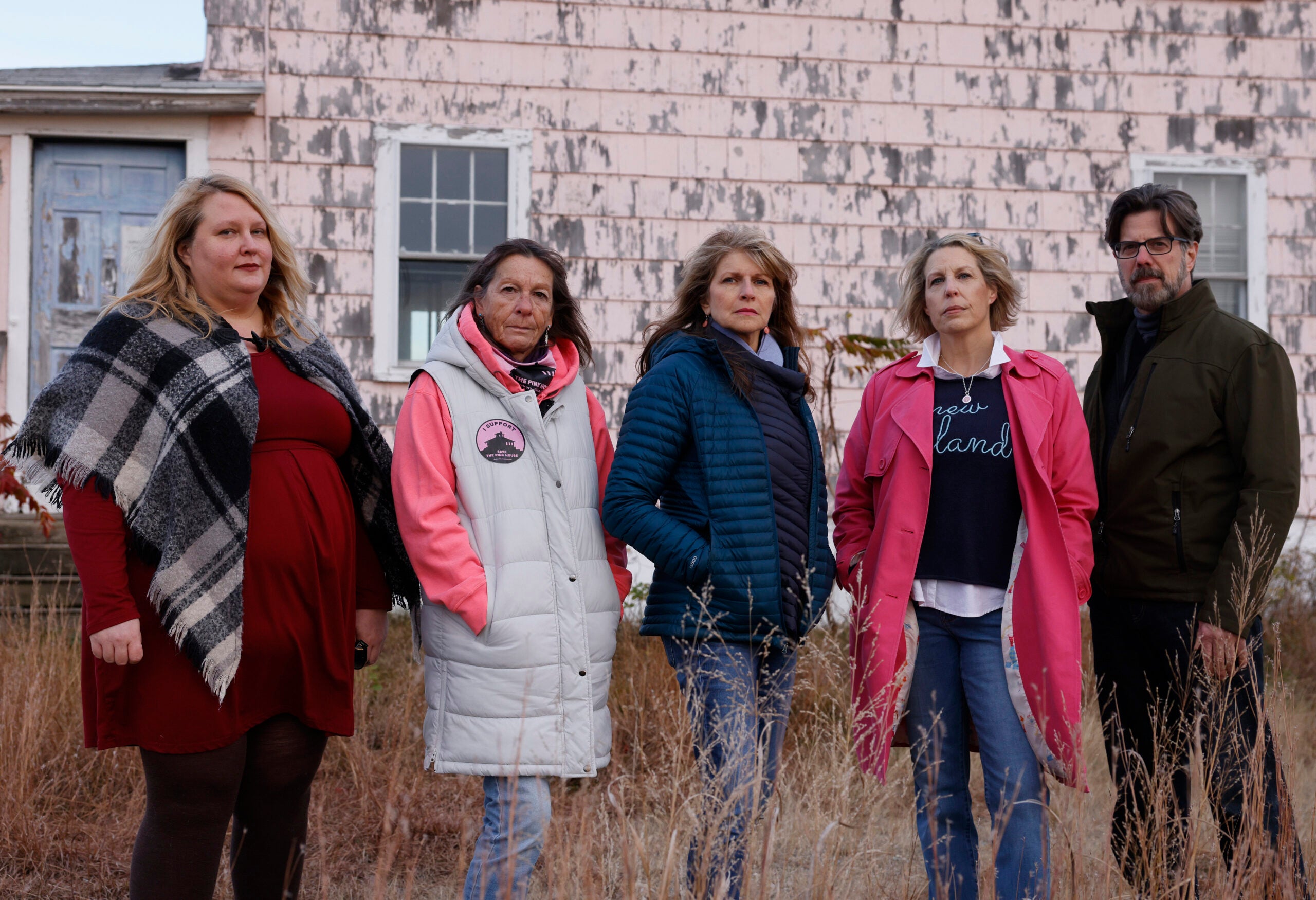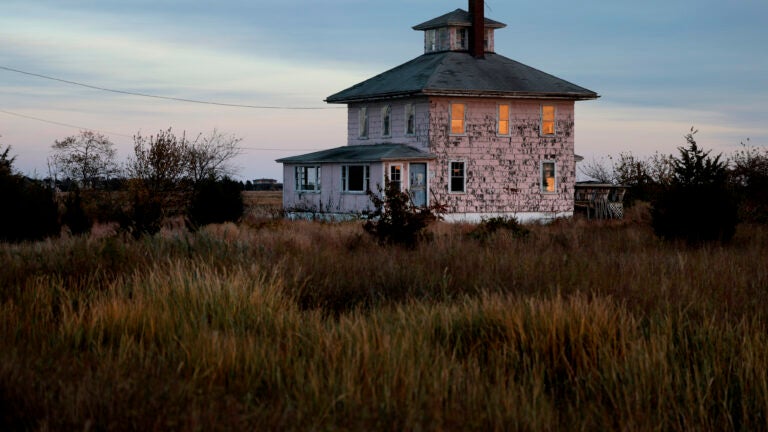Local News
Bereft of bidders, the U.S. Fish and Wildlife Service plans to demolish the structure by the end of the year.
The nearly six-week public auction to relocate or salvage the famous Pink House in Newbury failed to attract any bidders, or even anyone who wanted to view it during its three showings.
Despite extensive grassroots efforts to save the iconic house in Newbury, the U.S. Fish and Wildlife Service closed the auction with plans to demolish it by the end of the year.
The Pink House sits alone on the expansive marshes of Plum Island on the Parker River National Wildlife Refuge. The refuge, located next to the Plum Island Turnpike, is a part of the U.S. Fish and Wildlife Service.
Over the nearly 100 years the house has stood there, it has become a favorite for artists and a symbol of the region.
The federal agency said the auction was the last chance to save the house through relocation or repurposing.
“While we regret that this outcome does not satisfy everyone, we are confident all options have been exhausted, and we are moving forward aligned with our conservation mission,” U.S. Fish and Wildlife said in a statement.
Following the final environmental assessment plan, the agency will abate hazardous materials, such as lead and asbestos, remove the house, and restore the surrounding habitat. A portion of the property may be open to public use on a trial basis.
According to the plan, the estimated cost to remove the structure, fill the foundation, and restore the habitat is between $50,000 and $90,000.
“This decision was not one made hastily or easily,” wrote the refuge manager, Matt Hillman, in an open letter in July. “We understand fully the strong sense of place that draws many to the Pink House, and we acknowledge the cultural values impacted by its loss. It is undeniably difficult to lose places and memories we love, but in the natural environment, change is constant, and the salt marsh has become an untenable home for the Pink House.”
A troubled history
In 2011, the federal agency purchased the Pink House and more than nine acres of upland, salt marsh, and tidal creek habitat to protect the habitat from development. Plans included updating the house for seasonal staff housing.
However, a 2014 environmental survey found that the building contained over 3,000 square feet of asbestos, a severe human health risk. So, the house, which was bought already in disrepair, has continued to deteriorate.
Given the health and safety hazards, the agency determined it was unsuitable for staff housing or any other feasible use.
Further, the agency said the house had become a nuisance, requiring frequent law enforcement patrols and repairs due to vandalism. Funds were also used to maintain structural stability and safety, as the basement is now permanently flooded.
Figuring out what to do with the house was no easy task, since it couldn’t be bought or sold. Because the federal agency owns it, the Pink House’s land could only be exchanged with land equal to its monetary value, and of higher ecological value than the house’s acre.
After initial announcements that they would demolish the house by 2016, the public pushed the agency to save it.
However, the announcement that the federal agency could not find a bidder was no shock to the Support the Pink House nonprofit, which partnered with the U.S. Fish & Wildlife Service to save it around two and a half years ago.
Even the listing noted the house, about a 1,514-foot, two-story residence built in 1925, has been unoccupied for several decades and has lead-based paint, asbestos and mold.

“We are still working,” said Sandy Tilton, who is on the Support the Pink House board.“We’ve done everything possible on behalf of the community and are still working behind the scenes to get this land trade accomplished.”
The celebration continues
To keep the Pink House’s story alive, the organization announced a 100th birthday party celebration on Saturday, June 14, 2025. The date marks a century since the summer of 1925, when Gertrude Cutter purchased the property from widow Abbie K. Little and proceeded to build the house.
The goal, even if the house is demolished, is to celebrate the Pink House and how it has become a part of the community’s fabric forever.
After all, the house was at this location long before U.S. Fish and Wildlife owned the land, Tilton said. The legend will continue to be passed from one generation to the next.
“In the end, change is never easy, but it’s also not forgotten, and in this case, it will never be forgotten,” Tilton said.
Boston.com Today
Sign up to receive the latest headlines in your inbox each morning.
